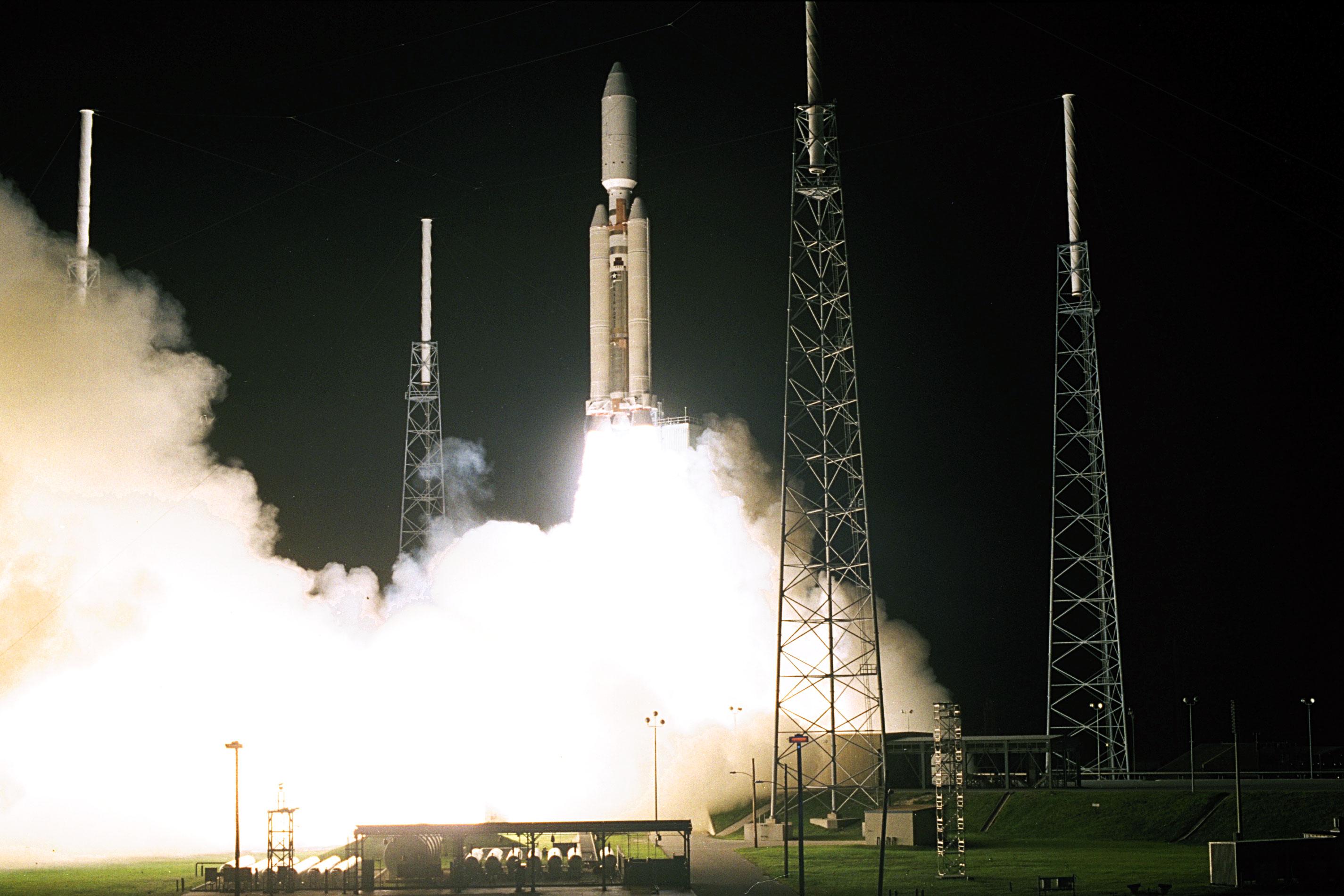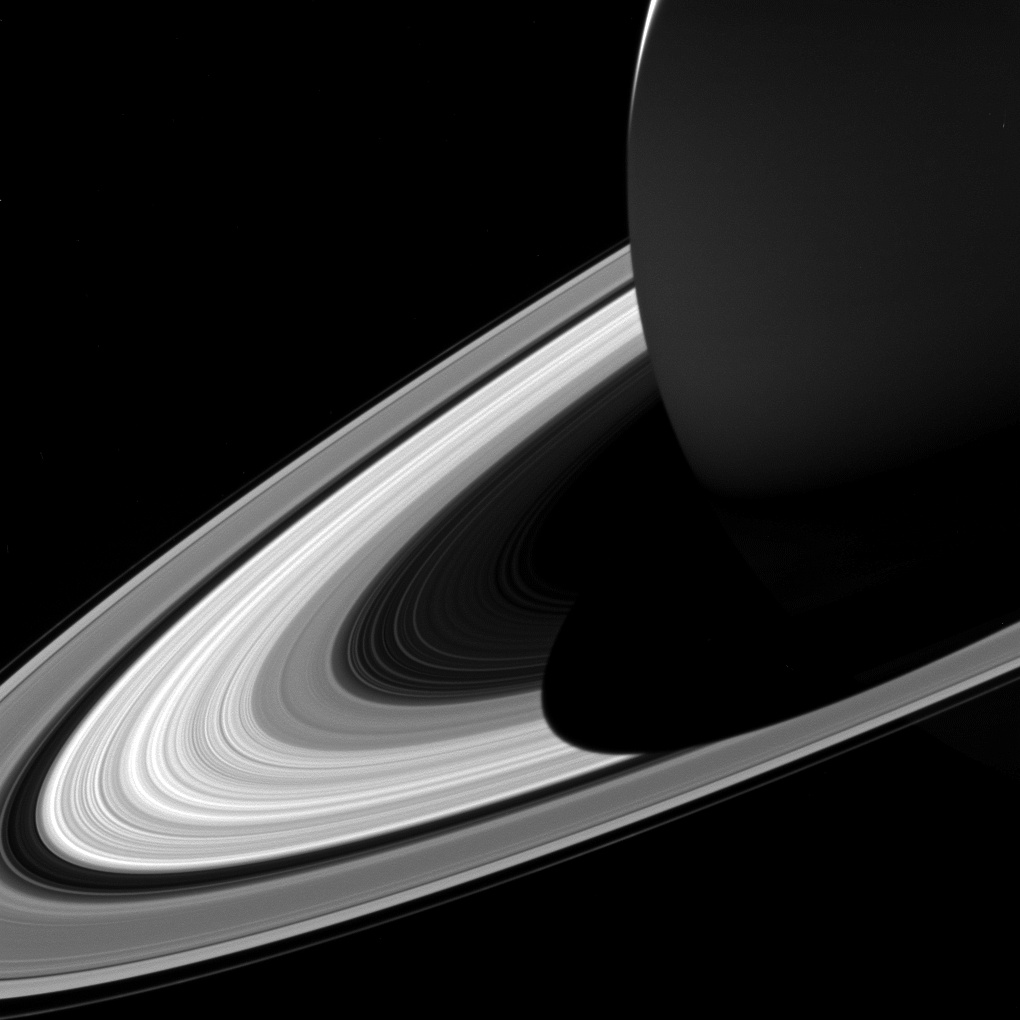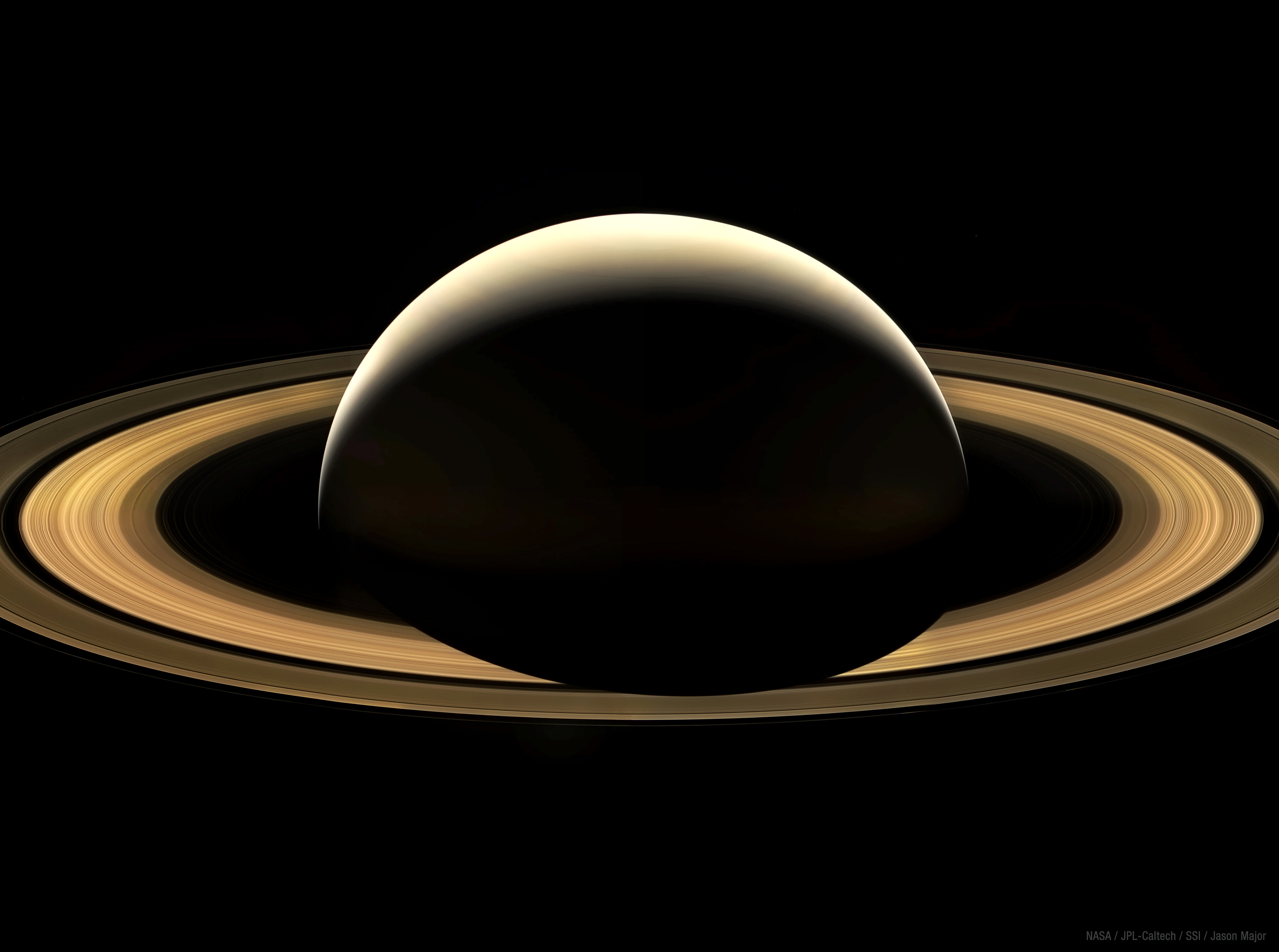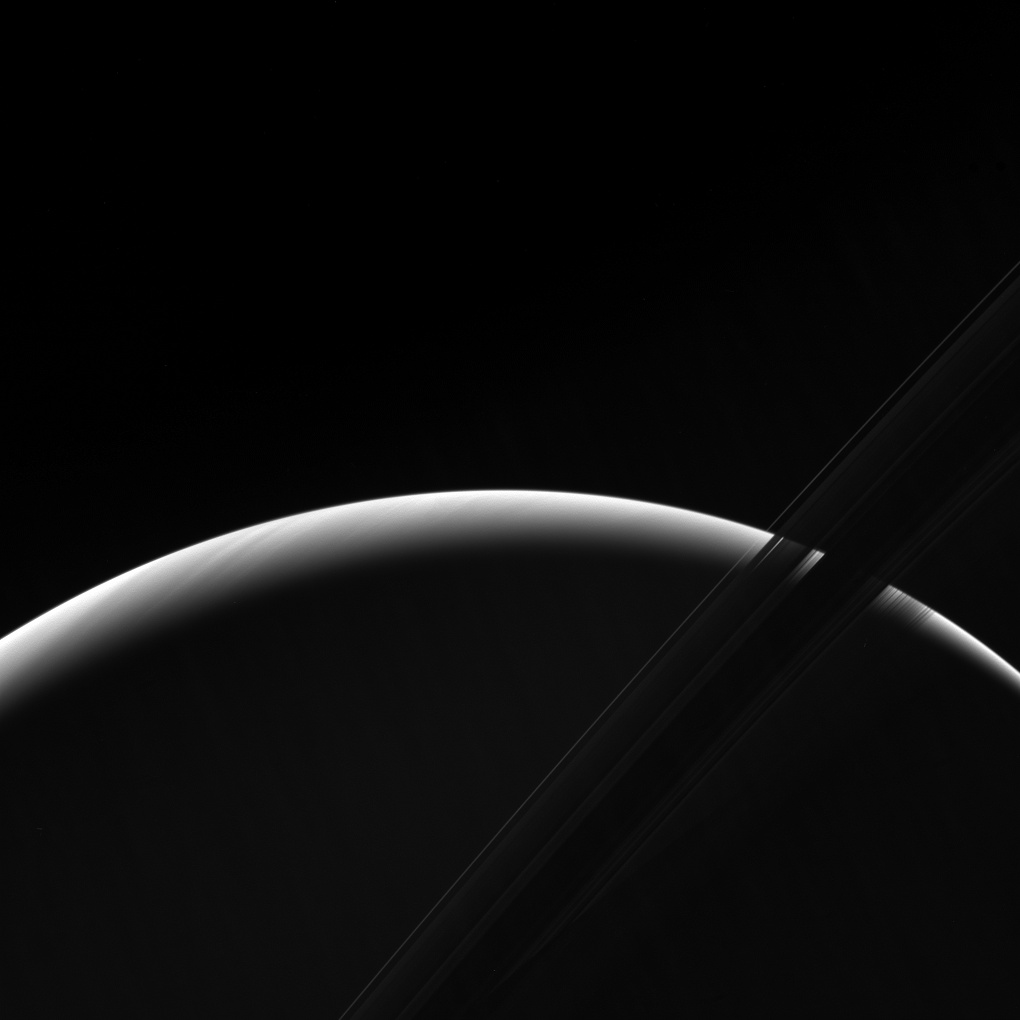
In the pre-dawn darkness of 15 October 1997, exactly two decades ago, this very day, one of the largest and most powerful rockets ever brought to operational service was poised for launch on Space Launch Complex (SLC)-40 at Cape Canaveral Air Force Station, Fla. Standing some 183 feet (55.9 meters) tall, the Titan IV had flown on 20 occasions in the previous eight years, completing all but one of its missions successfully. However, the configuration to be employed on this particular flight—known as the Titan IVB-Centaur, a three-stage beast, with two side-mounted solid-fueled boosters—had only launched once before, to deliver a military satellite into orbit in February 1997. Many minds, of course, were on the Titan IV’s single operational failure, for on 15 October 1997 the Titan IV faced perhaps the most important mission of its career: the launch of the Cassini-Huygens spacecraft on a 1.4-billion-mile (2.2-billion-kilometer) journey to explore Saturn.
Priced at an estimated $430 million per launch, during this period, the Titan IV’s main customer was the U.S. Air Force. Between June 1989 and October 2005, the rocket flew 39 times, including 22 Titan IVA missions and 17 Titan IVB missions. Key payloads included Defense Support Program (DSP) early-warning satellites, Naval Ocean Surveillance System (NOSS) satellites, Milstar communications satellites and classified reconnaissance/intelligence platforms for the National Reconnaissance Office (NRO). Overall, the rocket’s tenure was highly successful. Thirty-five of its missions met with total success, whilst two Titan IVAs exploded in August 1993 and August 1998 and a pair of Titan IVBs were lost, both in April 1999.
Video Credit: NASA
Cassini-Huygens was alone on the Titan IV manifest as a “civilian” mission, sponsored primarily by NASA, with involvement from the European Space Agency (ESA) and the Italian Space Agency (ASI). And as dawn neared on 15 October 1997, more than a few minds harked back to 2 August 1993, when a Titan IVA lofted a group of naval ocean surveillance satellites from Vandenberg Air Force Base, Calif. Less than two minutes after liftoff, one of the rocket’s solid-fueled motors exploded and the vehicle was lost. Following that event, a dozen more Titan IVAs flew flawlessly and on the evening of 23 February 1997, the first Titan IVB—equipped with uprated solid motors, capable of 3.4 million pounds (1.5 million kg) of thrust, a 5-percent uplift than its predecessor—took to the skies and successfully delivered a DSP payload to orbit.
The mission to Saturn, however, would be the Titan IV’s high-watermark, from a public relations perspective. Launch of Cassini-Huygens was targeted during a precise “window”, which extended from 6 October through 15 November 1997. Within that window, the most opportune dates were 6 October until 4 November, which would create the proper trajectory conditions to achive multiple planetary rendezvous and an arrival at Saturn in July 2004. If the opportune dates were missed, a launch before 15 November would require significantly more propellant to get Cassini to the ringed planet, producing an arrival time between December 2004 and December 2005.

And if this entire window was missed, a six-week period from 28 November 1997 through mid-January 1998 would lead to an arrival at Saturn in late 2006, after a highly undesirable 8.8 years of flight. Not only would the cruise be longer, but the illumination of the giant planet’s rings would be less suitable. Dates beyond that included March-April 1999, which would lengthen the journey to almost a full decade, arriving in December 2008. This, too, would carry a negative effect in terms of science: observations of Saturn’s rings at the requisite illumination would be restricted and the long journey time was also expected to have a degrading impact on Cassini’s Radioisotope Thermoelectric Generator (RTG) suite of plutonium-fed power sources.
And it was the presence of those RTGs which had raised a great deal of popular opposition to the launch, from anti-nuclear protest groups. In June 1995, NASA had completed an Environmental Impact Statement, and subsequently a Supplement, as required by the National Environmental Policy Act, as well as the space agency’s internal policy. An Interagency Nuclear Safety Review Panel—which included safety experts from the Department of Energy, the Environmental Protection Agency, NASA and the Department of Defense—expressed their satisfaction that the mission’s safety analysis was both comprehensive and thorough. On 3 October 1997, NASA received formal approval from the White House to proceed with Cassini’s launch.

Flying during the most ideal part of the Saturn launch opportunity was critical and Cassini-Huygens was eventually targeted to rise from Earth at 4:55 a.m. EDT on 13 October 1997, at the start of a 140-minute “window”. The slight delay of a week past the window’s opening date also allowed for more time to repair damaged thermal insulation aboard the spacecraft itself. The opening of the window would move six minutes earlier, for each of delay.
On 10 October, the spacecraft was closed-out and the payload fairing atop the Titan IVB was secured for flight. Plans called for countdown operations to begin early on the 12th, at T-26 hours, although there existed only a 60-percent likelihood of acceptable weather on the 13th. This mediocre forecast was predicted to remain the same for the 14th. Cloudy conditions and the possibility of showers and higher-than-allowable surface winds were key violating factors. When this was taken into account, a decision was made to postpone the launch until 15 October, when weather conditions were expected to improve to 80-percent favorable. In response to the delay, the Mobile Service Tower (MST) was moved back into position around the Titan IVB and the Centaur upper stage was “de-tanked” of its liquid oxygen and hydrogen propellants.

In the small hours of the 15th, the main worries were gradually weakening upper-level winds at 40,000 feet (12,000 meters). All was quiet on the countdown net. A few twinkling lights at SLC-40 twinkled through the darkness. “T-minus ten, nine, eight, seven,” came the call from the launch announcer, as the Titan IVB came alive. “Six, five, four, three, two, one…” All at once, the base of the 2.2-million-pound (1-million-kilogram) rocket erupted with a torrent of flame, as its twin solid-fueled motors ignited, pushing the Titan IVB off the pad with a combined thrust of 3.4 million pounds (1.5 million kg).
“And liftoff of the Cassini spacecraft…on a billion-mile trek to Saturn!”

Ponderously, the rocket rose into the dark sky, under the enormous power of the solids, which burned for 2.5 minutes and boosted the stack to an altitude of 216,500 feet (66,000 meters). Shortly before the burnout of the solids, the dual-nozzle LR-87 engine of the Titan IVB’s first stage ignited, producing 548,000 pounds (248,000 kg) of thrust. The solids—each measuring 112.4 feet (34.2 meters) long—separated smoothly and on time, although the apparent “flare” associated with their departure proved a little disconcerting to long-range viewers on the ground.
Three-and-a-half minutes into the flight, the payload fairing surrounding Cassini was jettisoned, exposing the spacecraft to the environment which would be its home for the next two decades. The first stage separated and the second stage picked up the thrust, adding 105,000 pounds (47,000 kg) of propulsive yield to the rocket’s velocity. Finally, a little over nine minutes after departing Cape Canaveral, the second stage fell silent and Cassini—mounted atop the 29-foot-long (8.9-meter) Centaur upper stage—was set free. The Centaur’s twin-nozzle RL-10 engine was used for a pair of “burns”, the first lasting two minutes, placing the stack into an Earth-parking orbit, then a second, which established Cassini in the proper conditions for its journey through the Solar System.

The spacecraft was separated from the Centaur at 42 minutes and 40 seconds after launch. All told, the Titan IVB’s performance that October morning, 20 years ago, was exemplary. “Right on the money!” exulted Cassini Program Manager Richard J. Spehalski of NASA’s Jet Propulsion Laboratory (JPL) in Pasadena, Calif. The energy afforded the spacecraft by both the Titan and its Centaur upper stage achieved an accuracy to within one part in five thousand. The angular deviation in the trajectory was insignificant at better than .004 degrees and the adjustment to Cassini’s post-launch trajectory was only minor.
The rest, of course, is history. After almost seven years of flight, Cassini reached its destination in July 2004 and spent more than a decade exploring the ringed planet and its exquisite system of moons, before being deliberately plunged into Saturn’s atmosphere last month. Significantly, the spacecraft sent Europe’s Huygens lander to alight on the surface of Titan and revealed tantalizing clues of ancient water on Enceladus.

However, the protesters who fought so hard to have Cassini halted in its tracks may have been silenced by the proven safety of the spacecraft’s nuclear power source, but the ever-present risk of launching rockets remained. On 15 October 1997, only a single Titan IV had ever failed to deliver its payload to orbit. Within 18 months of Cassini’s launch, not one, but three Titan IVs would be lost. The first—in agonizing, though spectacular fashion—came in August 1998, when a Titan IVA was remotely destroyed by Range Safety at an altitude of 17,000 feet (5,200 meters), when its guidance system short-circuited, due to a frayed wire. Then in April 1999, within three weeks of one another, a pair of Titan IVBs failed to insert their payloads into orbit.
By the time the Titan IV’s career ended in October 2005, after 39 launches and 35 successes, it had established an 89.7-percent record for itself. More than 40 military satellites were successfully delivered to orbit, but its triplet of failures—in such a short period of time—makes it all the more remarkable that Cassini survived a tumultuous journey into space and completed an outstanding mission for science.
FOLLOW AmericaSpace on Facebook!
.






Add the Titan IV to the planetary “Hall of Fame.” What wonders it provided to humanity.
I remember this SO VIVIDLY!!!!!